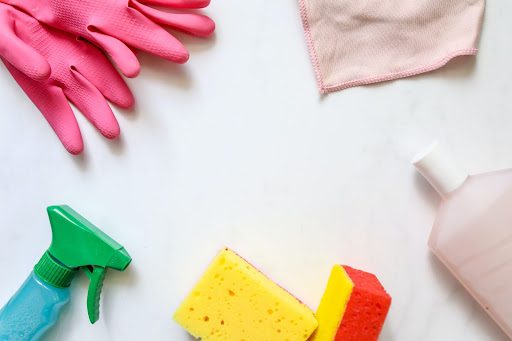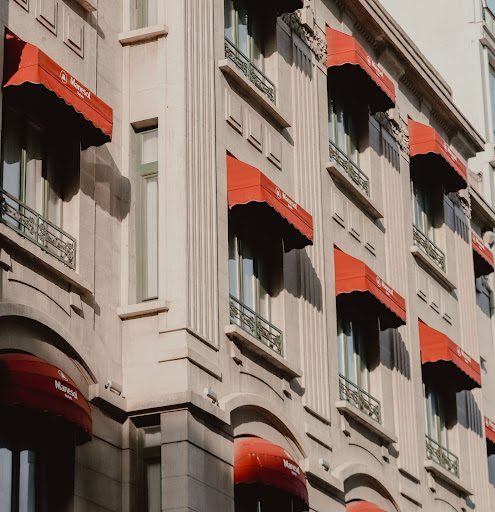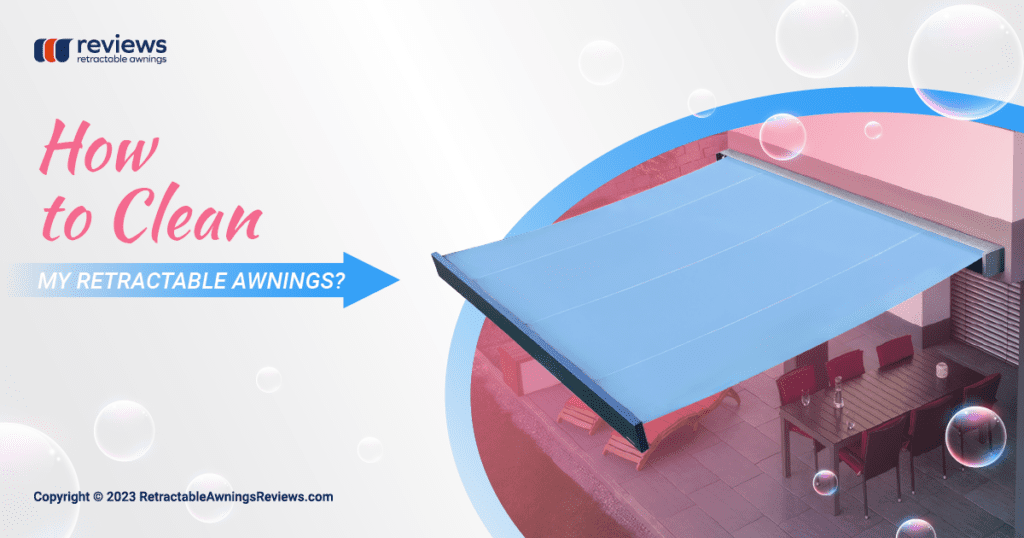
Have you installed one or more retractable awnings at your private residence or commercial outdoor area? Do you love spending time outdoors on scorching summer days and during light rain showers in spring or autumn in the comfort of a sheltered outdoor living space? We won’t judge you if you want to keep that comfort for as long as possible.
A retractable awning is a significant investment for your home or business, especially if you purchase a high-quality product from a world-class manufacturer. Naturally, most people start looking for the most effective way to preserve their purchased product to maximize its value.
Besides preserving it for a more extended period, you might want to keep your awning looking fresh and stylish. That’s especially true for awning covers made of acrylic or natural materials. A clean outdoor canopy always makes a pleasant impression on house guests and business customers.
If you are unsure of the proper way to clean and maintain your outdoor retractable awning, you’ve come to the right place. Today we’ll discuss how imperative it is to maintain your retractable product properly.
We’ll also include a step-by-step guide on how to clean your awning with details about recommended detergents, frequency of cleaning and some bonus tips to keep your shelter shining.
Why is it important to clean your retractable awning?
If you’ve invested in a high-quality material product, you probably received that product with a warranty of 10 or even more years. It’s natural to think it will last long without any effort whatsoever. However, this is not necessarily the case with retractable awnings.
There are a few reasons why you should clean and maintain your awning, but which one is the most relevant is your personal choice.
To extend its durability
The warranty period refers to the materials, workmanship and structural durability offered by the vendor. The manufacturer guarantees that their product will last for a certain period as long as it’s adequately maintained and not misused. They will only be liable for construction-related damage or faulty materials.
However, in most cases, awning damage is caused due to negligence and carelessness on the owner’s part. In such cases, the warranty won’t cover such damage, and you won’t get your product repaired or replaced. That’s why it’s essential to clean and maintain the awning as industry standards recommend.
Maintain it so that it looks new
Do you use your outdoor awning at home and want it to look fresh? Or you’ve installed it to improve curb appeal and wish to sell it to a potential buyer? Maybe you’ve covered the outdoor area of your restaurant or shop and want to attract new customers and show that you care about your business.
Whatever the reason for your purchase, it’s inevitable you want to keep the awning looking fresh and new at all times. It’s your responsibility to look after your roof, protect it from dangerous weather and clean it regularly. Doing all that will ensure a cozy outdoor space that attracts both old and new visitors.
To save money
Who doesn’t want to save money on unnecessary expenses? You certainly don’t want to spend a fortune because you weren’t taking proper care of your awning. High-quality spare parts and replacements can be pretty pricey unless you are willing to buy cheap and faulty Chinese products.
Preventative maintenance can save you lots of money down the road and preserve your awning for longer. You won’t have to buy and replace retractable awning fabrics or hardware due to mold, mildew and tears. If you clean it regularly, the material will keep its vibrant colors and complement your outdoor design.

Two ways to clean your awning fabric
We understand how important it is for awning owners to take proper care of their products. Cleaning is an essential part of preserving the fabric and prolonging its life. That’s why we created an extensive step-by-step guide to guide you through the process.
Although you need to clean the frame of the awning too, we decided to focus on cleaning the fabric, as it’s more time-consuming and specific.
Before you begin, make sure you have the following items:
- A long broom
- A ladder
- A garden hose
- A bucket
- Water
- Liquid dish soap
- A cloth
- A soft brush
- Waterproof spray
Monthly or annual cleaning?
Let’s begin with some theory first. Cleaning your awning’s fabric is essential for longevity and preserving its bright, vibrant colors. Rinse it once a month if you can spare the time. While rinsing is a cosmetic process, deep cleaning is more thorough. It should be done once a year for residential awnings and twice a year for commercial roofs.
In both cases, choose sunny warm days, so the retractable awning’s fabric and frame will dry out quickly.
Rinse it once every month in 3 steps
Let’s begin with rinsing, as it occurs more often than deep cleaning. For maximum convenience, follow the steps below when you start the process.
1. Remove leaves and debris
The first step of the monthly cleaning is removing loose leaves and debris from the fabric. To do that, use the long brush you have prepared in advance. Extend the awning to its maximum projection length so the fabric is taut.
Begin brushing from the bottom of the fabric (the front bar) to the top (towards the attachment bar). Sweep the underside of the fabric too. If your awning is too high up and you don’t have a suitable broom, use a ladder to reach the top of the material.
After this initial step, you can easily wash the fabric without turning dust into mud.
2. Check for fresh stains
Make sure to check for fresh stains every month during your regular cleaning, as the newer they are, the easier they will be to remove. Examine the area for grease, bird droppings, tree sap, etc. Use a liquid soap and water mixture to dampen a cloth or soft bristle brush and use it to wipe or scrub away the stain accordingly.
3. Remove any residual dirt
As mentioned before, monthly cleaning is only cosmetic. That’s why you won’t have to clean the awning deep. Instead, use your garden hose to rinse down the taut fabric with clean water to remove any residual loose dirt and dust. Clean the upper and the underside starting from the inner side (where the awning rail is), and working outwards.
Hose down the entire frame and all moving parts and leave it to dry. Avoid using a pressure washer as they are very powerful and will most likely damage your product.

Deep clean every year in 6 steps
If the time of the year for your awning’s deep clean has come, follow the steps below and make the fabric shine again.
1. Remove leaves and debris
Remove leaves and debris as described above.
2. Remove any residual dirt
Remove any residual dirt as described above.
3. Wipe down or scrub the entire fabric
Use the bucket for a mixture of ¼ cup of mild dish soap and a gallon of warm water. Secure the ladder and make sure you can reach the desired area safely. Use a cloth or a soft bristle brush to wipe down or scrub the entire awning fabric.
If you are scrubbing, ensure you don’t put too much pressure to avoid causing damage. For difficult stains, let the soap soak in for about 15 minutes.
4. Rinse it with a hose
After scrubbing and removing all stains, it’s time to wash off the soap. Remember this step is critical, as residual soap can discolor the fabric’s color. Use the hose and thoroughly rinse the entire awning on the bottom and top.
5. Leave the awning dry completely
If you’ve chosen a warm sunny day, drying the awning shouldn’t be much of a problem. Adjust the awning to the highest pitch, so the water drains outwards faster. Do not retract the top until it’s completely dry, as it will trap moisture and mold.
6. Apply a waterproof spray
When the canopy has been thoroughly cleaned and dried out, it’s time to upgrade it. Use a waterproofing spray to spray the top part of the fabric. This will strengthen the fabric’s water-repellent properties, as scrubbing can sometimes damage the protective layer. It also prevents fabric mildew, mold and rot.
What detergent is advisable to use?
The most effective way to clean an awning fabric is to use mild dish soap mixed with warm water. However, check what detergents and chemicals your product’s manufacturer recommends. They will typically vary depending on the fabric type.
Keep in mind that various stains might require different detergents. Special awning shampoos and commercial cleaners are sold in stores and online, which you can use for stubborn stains. Such cleaners should be specifically designed for the type of fabric cover you will use for it.
Mold and mildew stains
If you notice any signs of mold and mildew, you must act immediately. You can recognize them in the black or green spots on the fabric. You can try to remove them with soapy water.
However, if that doesn’t work, there are particular mold and mildew stain removers you can buy in stores. Check if the product is made for outdoor awnings and doesn’t contain substances harmful to the fabric. Always follow the instructions in the manual.
Greasy stains
Greasy stains are unlikely to appear if you don’t have a cooking station near your awning. However, if your barbeque is nearby or you use the awning to shelter an outdoor kitchen, it’s possible to find cooking grease on both the bottom and the top of the fabric.
Another possibility of a greasy stain reaching the awning is if you keep the structure as a garage cover or a car shelter. The grains left behind by bug sprays are also known to be similar in consistency. Any oils and sprays used near the awning can leave such a stain.
Again, the sooner you try to clean the stain, the easier it will come off. If your awning has an acrylic cover, try removing the stain using acetone or nail polish remover. After that, scrub it with soapy water. If the body is canvas or vinyl, skip the acetone and use mild soap and warm, not cold, water.

How often should you clean your retractable awning?
For best results, awning experts recommend that you rinse your awning once every month and remove any newly formed stains and built-up debris. That rule applies to residential and commercial awnings.
If you are a homeowner who wants to deep-clean their retractable awning, it’s suggested to do it once every year. You can choose a time of your preference, as the start or end of the summer are the most common times for such activities. A warm day is an ideal time for deep cleaning.
We recommend that business owners deep clean their commercial retractable awnings twice a year. The right time to do it is just before the start of the summer season and again at its end.
Bonus maintenance tips
Cleaning is not the only way to maintain your awning. You can save yourself lots of headaches if you follow these simple tips.
Protect your awning from surrounding growths
One of the main rules for awning owners is to protect the structure from surrounding growth. Tree branches often scratch and tear the fabric. Don’t limit yourself to the nearest branch. Make sure a tree branch won’t fall onto the awning if a sudden storm with higher winds approaches.
It would be best if you also trimmed vines and shrubbery that may come into direct contact with the awning. The acid in some of these plants can also harm the fabric.
What’s the best way to preserve your awning?
Undoubtedly, the best way to preserve your retractable awning for longer is to use it according to the manufacturer’s instructions. For example, if you’ve bought a summer awning without waterproof qualities, you shouldn’t test it in heavy rain conditions.
Similarly, if your awning’s designed to withstand low-speed winds, you should always retract it when you know storms with strong winds are approaching. In other words, do not test the awning during harsh weather conditions.
If you do that, together with regular deep and cosmetic cleaning, you will enjoy your outdoor retractable awning for years to come.

